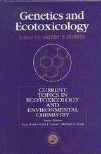Papers in the Biological Sciences

Valery Forbes Publications
Document Type
Article
Date of this Version
2007
Citation
Ecotoxicology and Environmental Safety (2007) 66: 291-308. DOI: 10.1016/j.ecoenv.2006.10.002.
Abstract
Assessment of risks to aquatic organisms is important in the registration procedures for pesticides in industrialized countries. This risk assessment consists of two parts: (i) assessment of effects to these organisms derived from ecotoxicological experiments (= effect assessment), and (ii) assessment of concentration levels in relevant environmental compartments resulting from pesticide application (= exposure assessment). Current procedures lack a clear conceptual basis for the interface between the effect and exposure assessments which may lead to a low overall scientific quality of the risk assessment. This interface is defined here as the type of concentration that gives the best correlation to ecotoxicological effects and is called the ecotoxicologically relevant concentration (ERC). Definition of this ERC allows the design of tiered effect and exposure assessments that can interact flexibly and efficiently. There are two distinctly different exposure estimates required for pesticide risk assessment: that related to exposure in ecotoxicological experiments and that related to exposure in the field. The same type of ERC should be used consistently for both types of exposure estimates. Decisions are made by comparing a regulatory acceptable concentration (= RAC) level or curve (i.e., endpoint of the effect assessment) with predicted environmental concentration (= PEC) levels or curves (endpoint of the exposure assessment). For decision making based on ecotoxicological experiments with time-variable concentrations a tiered approach is proposed that compares (i) in a first step single RAC and PEC levels based on conservative assumptions, (ii) in a second step graphically RAC and PEC curves (describing the time courses of the RAC and PEC), and (iii) in a third step time-weighted average RAC and PEC levels.


Comments
Copyright 2007, Elsevier. Used by permission.